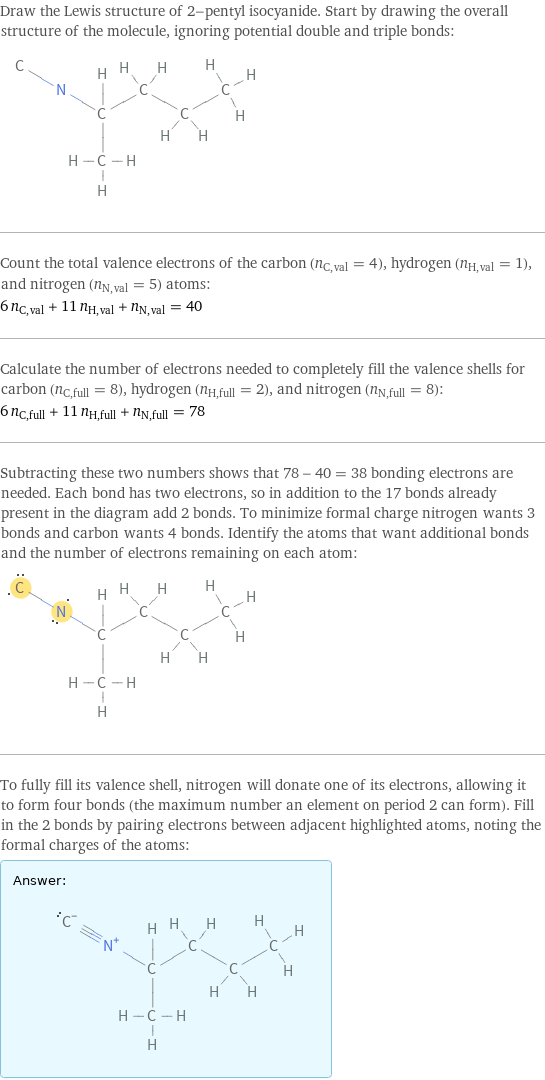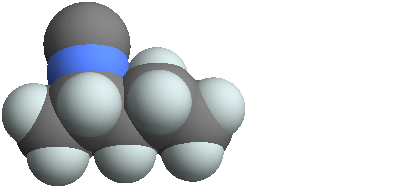Input interpretation

2-pentyl isocyanide
Chemical names and formulas

formula | CH_3CH_2CH_2CH(NC)CH_3 Hill formula | C_6H_11N name | 2-pentyl isocyanide IUPAC name | 2-isocyanopentane alternate names | 2-isocyanopentane mass fractions | C (carbon) 74.2% | H (hydrogen) 11.4% | N (nitrogen) 14.4%
Lewis structure

Draw the Lewis structure of 2-pentyl isocyanide. Start by drawing the overall structure of the molecule, ignoring potential double and triple bonds: Count the total valence electrons of the carbon (n_C, val = 4), hydrogen (n_H, val = 1), and nitrogen (n_N, val = 5) atoms: 6 n_C, val + 11 n_H, val + n_N, val = 40 Calculate the number of electrons needed to completely fill the valence shells for carbon (n_C, full = 8), hydrogen (n_H, full = 2), and nitrogen (n_N, full = 8): 6 n_C, full + 11 n_H, full + n_N, full = 78 Subtracting these two numbers shows that 78 - 40 = 38 bonding electrons are needed. Each bond has two electrons, so in addition to the 17 bonds already present in the diagram add 2 bonds. To minimize formal charge nitrogen wants 3 bonds and carbon wants 4 bonds. Identify the atoms that want additional bonds and the number of electrons remaining on each atom: To fully fill its valence shell, nitrogen will donate one of its electrons, allowing it to form four bonds (the maximum number an element on period 2 can form). Fill in the 2 bonds by pairing electrons between adjacent highlighted atoms, noting the formal charges of the atoms: Answer: | |
3D structure

3D structure
Basic properties

molar mass | 97.16 g/mol phase | liquid (at STP) boiling point | 137.5 °C density | 0.783 g/cm^3
Units

Liquid properties (at STP)

density | 0.783 g/cm^3 refractive index | 1.406
Units

Chemical identifiers
![CAS number | 355377-26-3 PubChem CID number | 4084558 PubChem SID number | 24878142 SMILES identifier | CCCC(C)[N+]#[C-] InChI identifier | InChI=1/C6H11N/c1-4-5-6(2)7-3/h6H, 4-5H2, 1-2H3 MDL number | MFCD02664562](../image_source/bdbeca2e59d3bddb893d0ef3eac0724f.png)
CAS number | 355377-26-3 PubChem CID number | 4084558 PubChem SID number | 24878142 SMILES identifier | CCCC(C)[N+]#[C-] InChI identifier | InChI=1/C6H11N/c1-4-5-6(2)7-3/h6H, 4-5H2, 1-2H3 MDL number | MFCD02664562
Safety properties

flash point | 26.11 °C